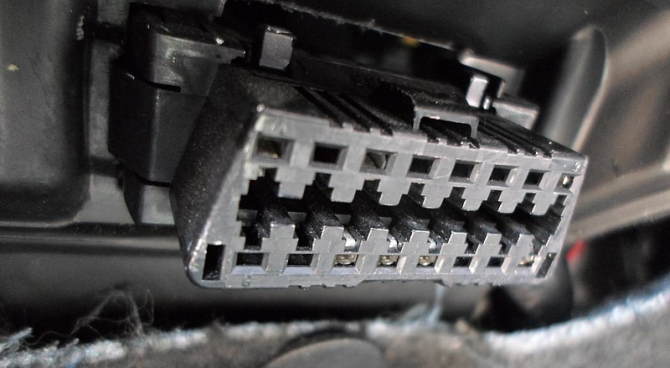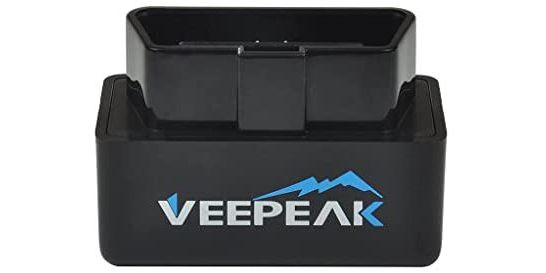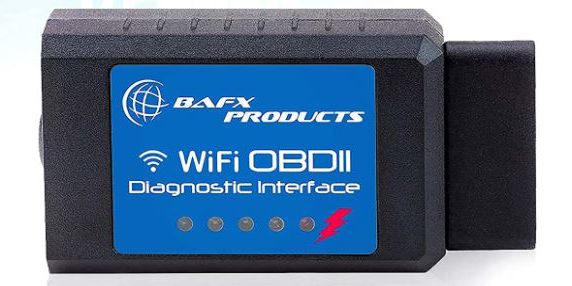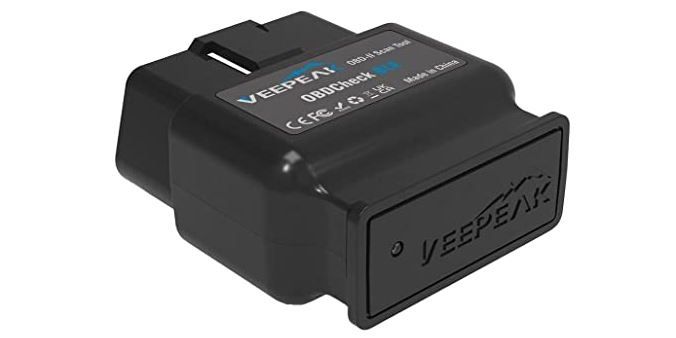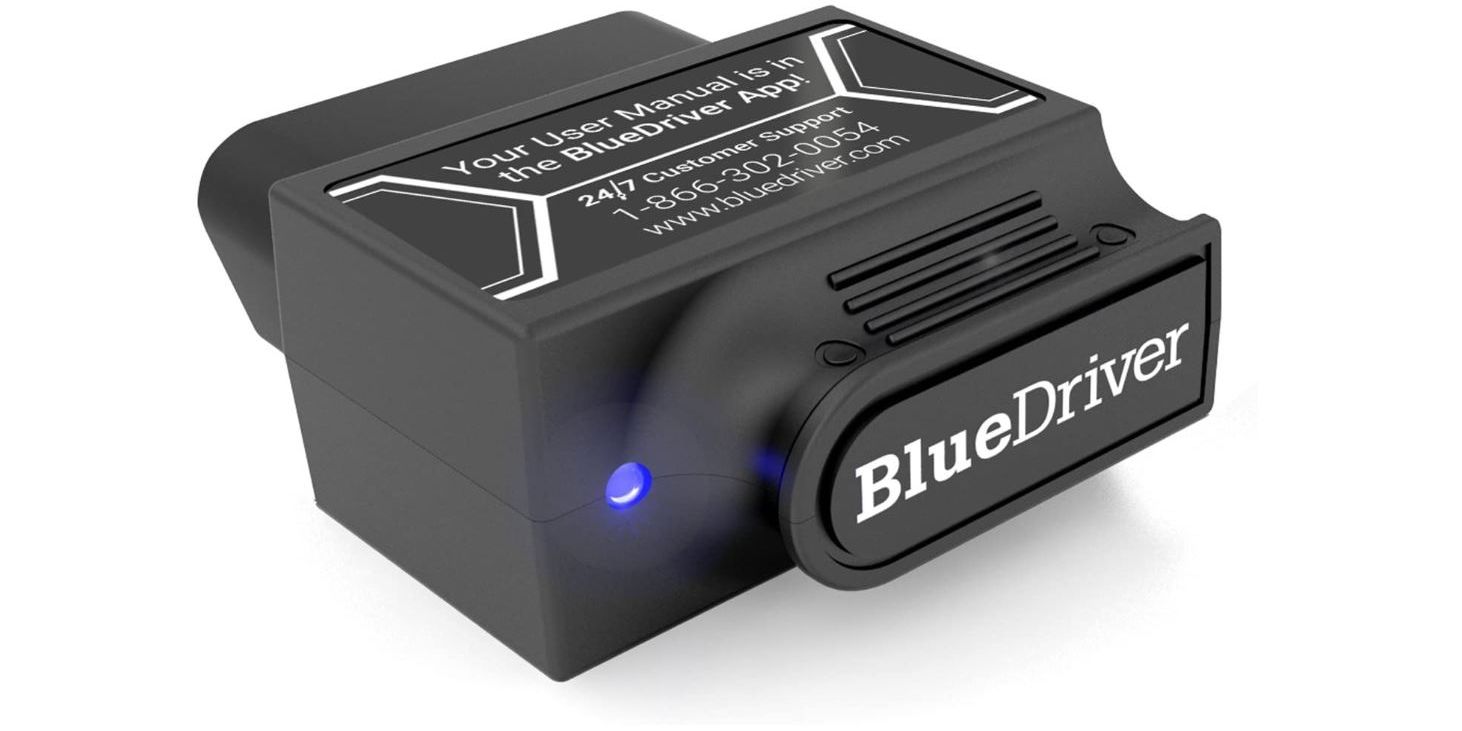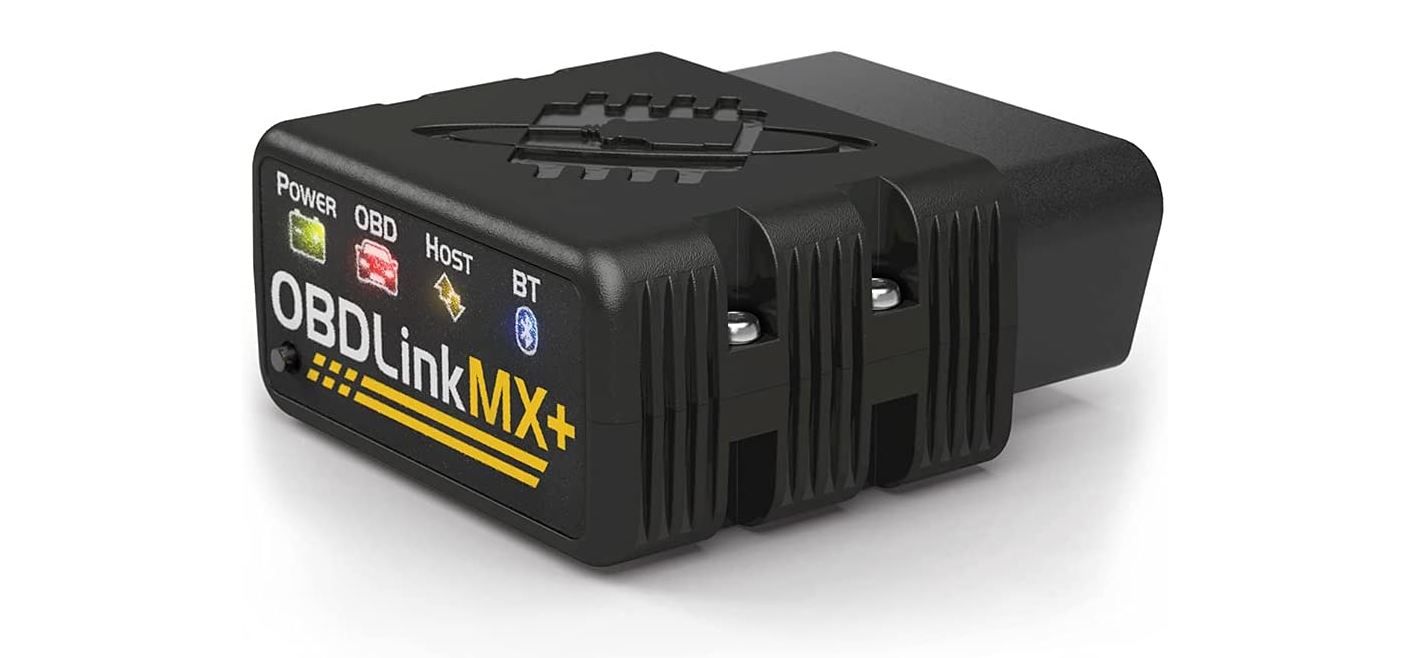If you purchased a car built after 1996, chances are it has an OBD-II (Onboard Diagnostics II) port. Every car or truck manufactured since then is legally mandated to have one installed.
OBD-II is an onboard computer that monitors emissions, mileage, speed, and other data points about your car. It's connected to the check engine light and other dashboard warning lights, which illuminate when a problem is detected.
The onboard computer features a 16-pin port, most frequently located under the driver's side dash. It allows a mechanic or anyone who has the right interface to read the error code using a special scan tool.
OBD-I vs. OBD-II
Before OBD-I, each manufacturer had its own set of standards for OBD, meaning that mechanics had to buy expensive proprietary scan tools for each plug type. OBD-I was first introduced in 1987 and started the standardization of onboard diagnostics. It had sensors to detect and attempt to reduce emissions, but it had many problems and shortfalls.
As a result, in 1996, car manufacturers agreed upon a new common standard and began equipping cars and trucks with a more advanced port called OBD-II. Every system is mostly the same, but there are slight variations; these are known as protocols and are specific to vehicle manufacturers.
There are five basic signal protocols:
- SAE J1850 PWM: Pulse Width Modulation, used in Ford vehicles.
- SAE J1850 VPW: Variable Pulse Width used in General Motors vehicles.
- ISO9141-2: Used in all Chrysler and a variety of European or Asian vehicles.
- ISO14230-4 (KWP2000): Keyword Protocol, used in various American, European, and Japanese brands like Honda, Jeep, Land Rover, Subaru, Mazda, Nissan, and more.
- ISO 15765 CAN: Controller Area Network, used on all vehicles manufactured after 2008.
Pins 4 and 5 in all protocols are used for ground connections, and pin 16 is used for power from the car's battery.
Once the computer detects a problem with the engine or any other component of the car, it will trigger the check engine light or any other necessary warning in the instrument cluster.
How Does OBD-II Work?
Diagnostic Trouble Codes (DTC) are stored in the computer system. Codes can vary from one manufacturer to another. However, anyone with an OBD-II scan tool can connect to the OBD-II port and read the diagnostic trouble codes from the computer.
Special scanners can connect to these ports on your vehicles and identify trouble codes from any manufacturer that uses one of the OBD-II protocols. Any OBD-II scan tool can read the codes because of the standardized pinout, which is as follows:
- Pin 1: Used by the manufacturer
- Pin 2: Used by SAE J1850 PWM and VPW
- Pin 3: Used by the manufacturer
- Pin 4: Ground
- Pin 5: Ground
- Pin 6: Used by ISO 15765-4 CAN
- Pin 7: The K-Line of ISO 9141-2 and ISO 14230-4
- Pin 10: Used only by SAE J1850 PWM
- Pin 14: Used by ISO 15765-4 CAN
- Pin 15: The K-Line of ISO 9141-2 and ISO 14230-4
- Pin 16: Power from the car battery
What Can Be Hooked Up to the OBD-II Port?
Mechanics can hook up a scan tool to the OBD-II port to read the DTC and provide a detailed explanation of the fault. Less expensive scanners would only provide a numeric code, which the mechanic would then look up from the manufacturer's manual or service website.
However, in recent years, there have been more advanced tools available for regular drivers who don't want to have to depend on a mechanic to find out what's wrong with their car.
One example is OBD-II scanners. These can come in an array of configurations, like wired and wireless. You can also find devices that connect to your smartphone or laptop and some with their own screens. Whatever you prefer, the choice is there.
Another option are GPS trackers. These can be hardwired into your vehicle, though they are commonly placed in the OBD-II port to give the device adequate power. They can be especially helpful in keeping track of loved ones or young drivers.
Other Mobile OBD-II Scanner Apps
Your car is constantly monitoring its various systems and components throughout the vehicle, and you can read that information through the diagnostic port. It can then be sent to your mobile device, where special apps can do the same job as a dedicated scanner. With this type of mobile scanner, you can just open an app on your phone and view vehicle parameters such as current fuel consumption, temperatures, and oil pressures—and you can, of course, also scan for error codes.
This is possible with any newer car if you have a device like one listed below.
1. Veepeak Mini WiFi OBD II Scanner
If you're looking for an inexpensive OBD-II diagnostic scanner solution, you can't go wrong with this one created by Veepeak for Android devices.
It works with various Android apps like Torque Pro, Torque Lite, or OBD Car Doctor. To make it work, just enable Bluetooth, and you can view various sensor data and diagnose error codes when your check engine light turns on.
Unlike most other devices in this price range, this device also lets you clear the error codes for minor things like a loose fuel cap.
2. BAFX Products OBDII Code Reader and Scan Tool
This wireless OBD reader by BAFX Products transforms your iOS device into an impressive, advanced OBD tool. Not only can you read all diagnostic data from your car, but you can also monitor real-time parameters like:
- Engine temperature
- Fuel rate
- O2 sensor voltages
- Battery voltage level
- Time your engine has been running
It's a useful tool to monitor the data that your car's dashboard doesn't actually show you. However, keep in mind that the third-party apps that work with this device aren't free.
3. Veepeak OBDCheck BLE Bluetooth OBD II Scanner
A slightly better device for your Android or iOS device is the Veepeak OBDCheck BLE with Bluetooth 4.0.
Just enable Bluetooth on your phone and connect to this scan tool to read information from your OBD-II port. It can read all OBD-II protocols. You can use it with various software, such as Torque, BimmerCode, BimmerLink, DashCommand, or even ScanMaster software for your Bluetooth-enabled laptop.
4. BlueDriver Pro OBD2 Bluetooth Scan Tool
The BlueDriver Bluetooth Professional OBDII Scan Tool is for anyone who would like a more functional OBD-II port scanner. This scan tool is Bluetooth-enabled and works with both Android and iOS devices.
It's more expensive than other wireless port readers on the market, but it comes with the features you'd expect from the same expensive scan tools that mechanics use.
The device lets you use a mobile app to read and clear both basic and advanced error codes. It also includes advanced tests with live data, such as misfire counts, digital readouts, graphs, and repair reports from a frequently updated online database.
5. OBDLink MX+ OBD2 Bluetooth Scanner
Reading and clearing error codes is useful, but if you really want to have access to real-time data, then the OBDLink MX+ OBD2 Bluetooth Scanner is the way to go. It's one of the more expensive options, but the features are simply amazing:
- Get real-time vehicle data even when you’re far from your vehicle.
- Enhanced support for Ford, GM, Mazda, Nissan, Infinity, Toyota, Honda, Kia, and more.
- Display, graph, and log hundreds of real-time parameters.
- Lock/unlock doors (on select vehicles).
While the price sets this advanced scan tool within the range of many expensive tools mechanics use, its impressive features make it well worth the cost.
Taking Advantage of Your OBD-II Port
The OBD-II port has been available in vehicles for many years, but it's only in recent years that it has been accessible to regular drivers. Having these devices and apps gives you much better insight into what's going on with your vehicle long before any significant problems ever occur.
Some port scanners also come with location-tracking features. But if that's what you're more interested in, check out GPS trackers for your car. Even though they don't show you your car's diagnostics, at least you can always find your vehicle as long as it has a GPS signal.
In addition, there are multiple uses for the OBD-II port that aren't linked to troubleshooting. You can also tune your vehicle's ECU via its OBD-II port, yielding more power and better fuel economy. The possibilities are endless!


